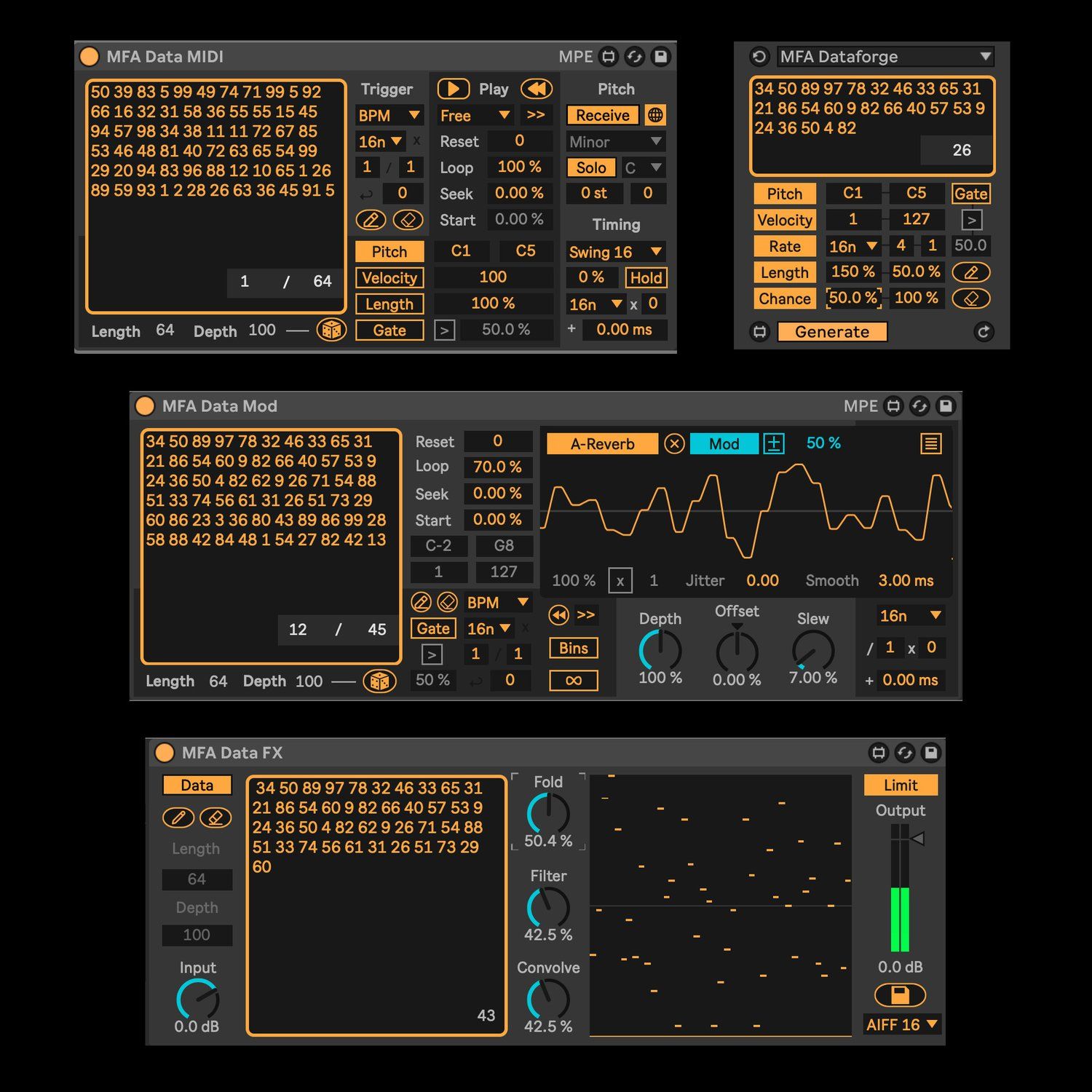Sonification Tools
Categories: Commercial Software Products
Submitted By: Manifest Audio
Elevator Pitch

Sonification Tools
Product Description
How It’s Innovative
Sonification Tools innovate by offering a comprehensive, flexible, and straightforward approach to transforming real-world data sets into MIDI, sound, and inspiration – directly in Ableton Live.
Prior to our Sonification Tools, data sonification techniques often required multiple platforms and even specialized coding skills in a convoluted process that would still yield rather static, unwieldy results. In contrast, Sonification Tools are designed to be instantaneous, flexible, and user-friendly, easily integrating data from text, spreadsheets, or websites through simple and familiar copy and paste. Offering extensive real-time manipulation capabilities, Sonification Tools allow users to adjust musical parameters such as pitch mapping and modulation ranges on the fly, turning any data source into a playable instrument.
Through this robust and playful feature set, Sonification Tools allow artists to embed layers of meaning in otherwise instrumental music, opening valuable discourse with their fanbase, and even cultivating dialogue with the scientific community. Integration with Live 12’s scale awareness and MIDI Tools make it easier than ever to generate musically coherent ideas from any data set.
For producers seeking to incorporate data-driven elements into their musical practice, educators looking for new ways to explore data with their students, or for artists seeking inspiration from real-world phenomena, our Sonification Tools are a welcome innovation.
See MIDI Innovation In Action
Most Inspiring Use Cases
There are numerous inspiring uses of Sonification Tools, but some highlights to date would include: neuroscience researchers using EEG data to produce music with Sonification Tools; glaciologists using Sonification Tools to express environmental data for a performance piece in Hobart, Australia; the Sound Obsessed Collective using Sonification Tools to explore data sets around sustainable development goals for a new installation work at this year’s Sónar festival; or Portrait XO and Ali Demirel using Sonification Tools to translate climate data for a performance at the Nobel Prize Museum in Stockholm earlier this spring.
Expansion Plans
Our Sonification Tools expansion plan includes the following goals:
· Content Marketing: Develop a series of short and inspiring instructional videos, tutorials, and case studies showcasing different uses of the tools in various genres and settings. Post these resources on YouTube, Vimeo, and relevant social media platforms.
· Influencer Partnerships: Collaborate with well-known music producers, composers, and sound designers to use and review Sonification Tools. Their testimonials and content can significantly boost visibility and credibility.
· Strategic Partnerships: Invite Ableton Live to feature Sonification Tools as a featured tool on their shop. Explore partnerships with other DAWs after porting to VST.
· Collaborations with Universities: Establish partnerships with music and technology departments to include Sonification Tools in their curriculum, enhancing its academic adoption and creating early adopters among students.
· Community Engagement: Develop our Discord community platform where users can share their projects, exchange tips, and provide feedback on the software. This can also serve as a think-tank for future product features and updates.
· Trade Shows and Music Conferences: Participate in industry events like NAMM, AES, MUTEK, Sónar, and Superbooth to demonstrate the software’s capabilities to a wide audience of music and audio professionals.
By implementing these strategies, Sonification Tools can enhance its market presence, increase its user base, and establish itself as a leader in the innovative field of data-driven music, media, and art.
Commercialization
Our Sonification Tools commercialization plan includes the following:
· Identify New Target Markets: Expand into educational institutions offering music and technology programs, as well as professional sound design studios and possibly even gaming companies.
· Introduce Flexible Pricing Models: Introduce a tiered pricing strategy that, along with our existing educational discounts, includes volume licensing for studios and institutions, and potentially a subscription model for long-term user engagement.
· Expand Feature Set: Explore the development of additional modules and pre-configured racks that could appeal to producers in specific genres, as well broader creative fields such as media arts and interactive installations. Meanwhile, our development roadmap includes real-time data input via OSC, as well as sonification of image and other file types. With adequate resources we would eventually explore porting Sonification Tools to VST format to work in other DAWs.
· Education & Support: Along with continued educational content, establish a dedicated support team to assist users with installation, troubleshooting, and creative uses of the tools.
Implementing strategies such as targeting new educational markets, introducing flexible pricing models, expanding the feature set, and enhancing education and support will significantly increase Sonification Tools’ commercial potential by diversifying our user base, enhancing product accessibility and appeal, and improving customer satisfaction and retention.